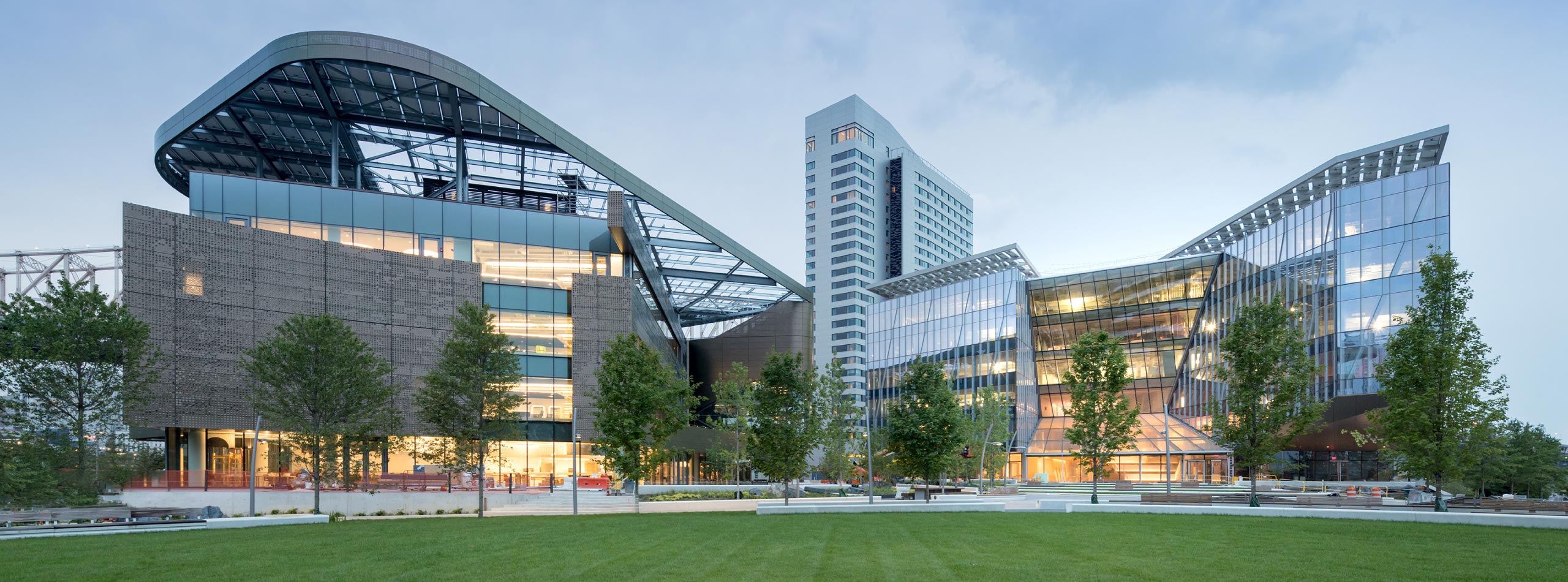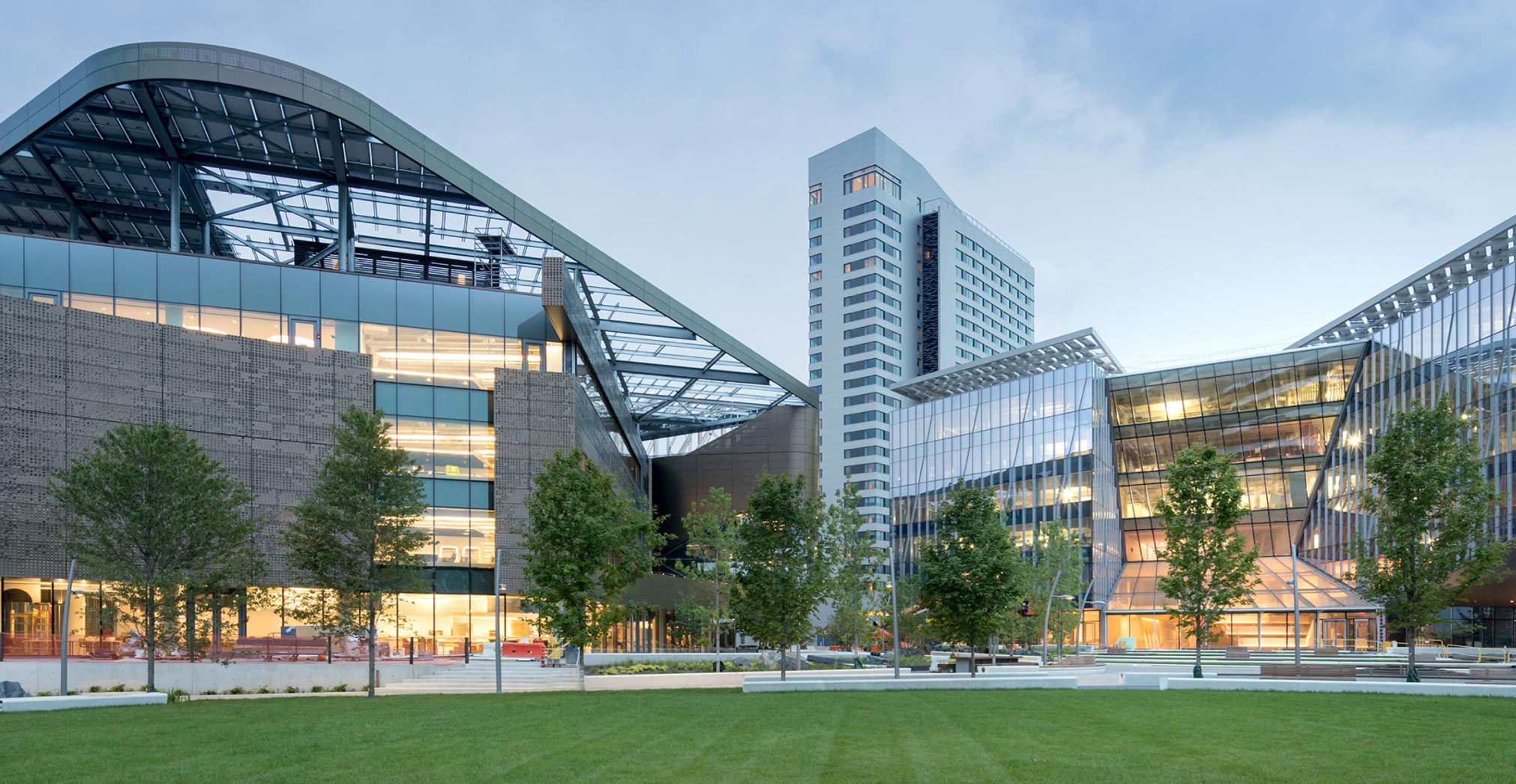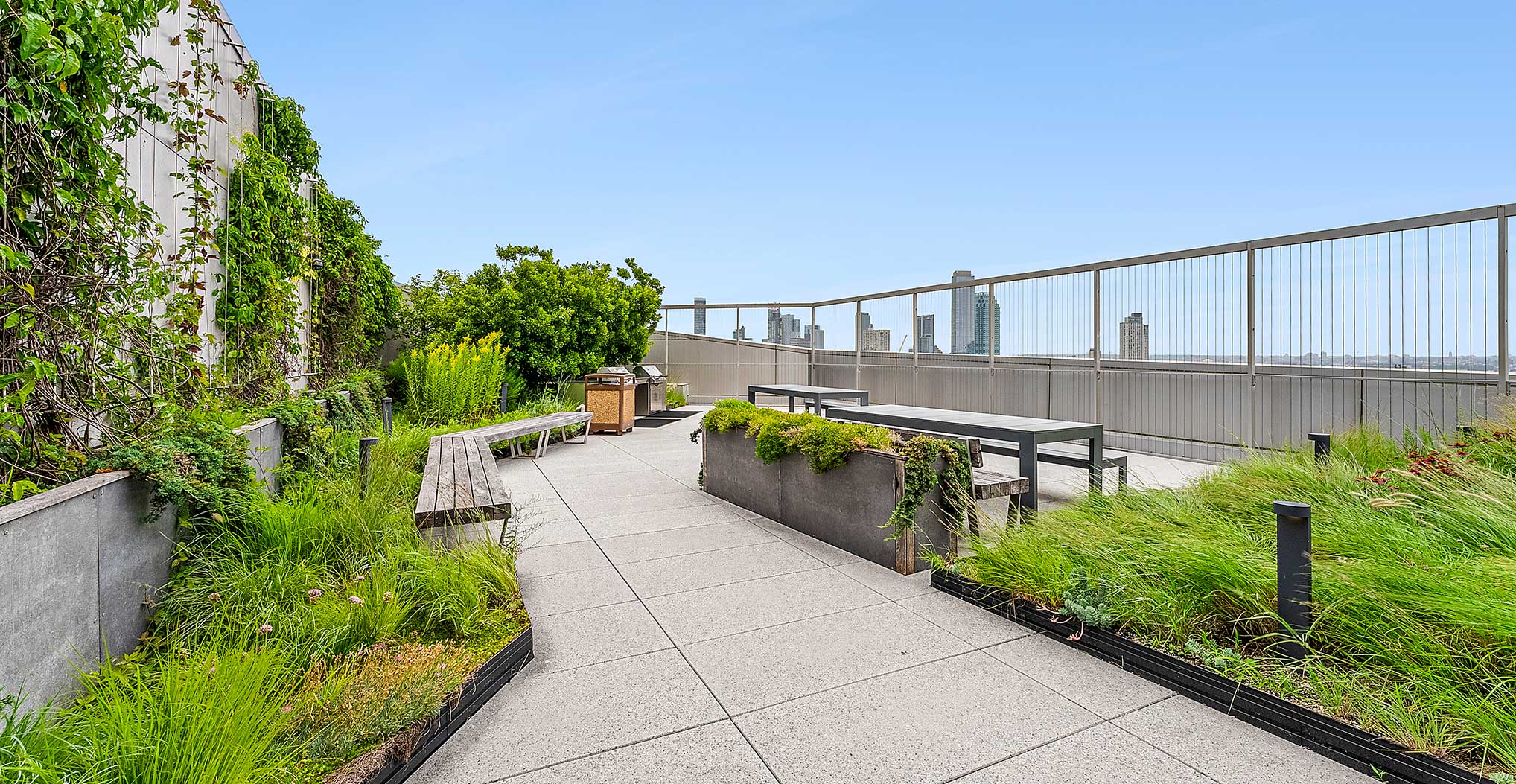SUSTAINABLE INNOVATION
IN ACTION
CORNELL TECH IS MEANT TO BE A PLACE where collaboration, creativity, and a builder mindset are cultivated—and there’s no clearer example of those tenets at work than in the groundbreaking execution of The House.
LEED PLATINUM CERTIFIED  PASSIVE HOUSE
PASSIVE HOUSE
Over 70 percent of New York’s greenhouse gas emissions come from buildings.
— NYC Mayor’s Office of Climate & Environmental Justice
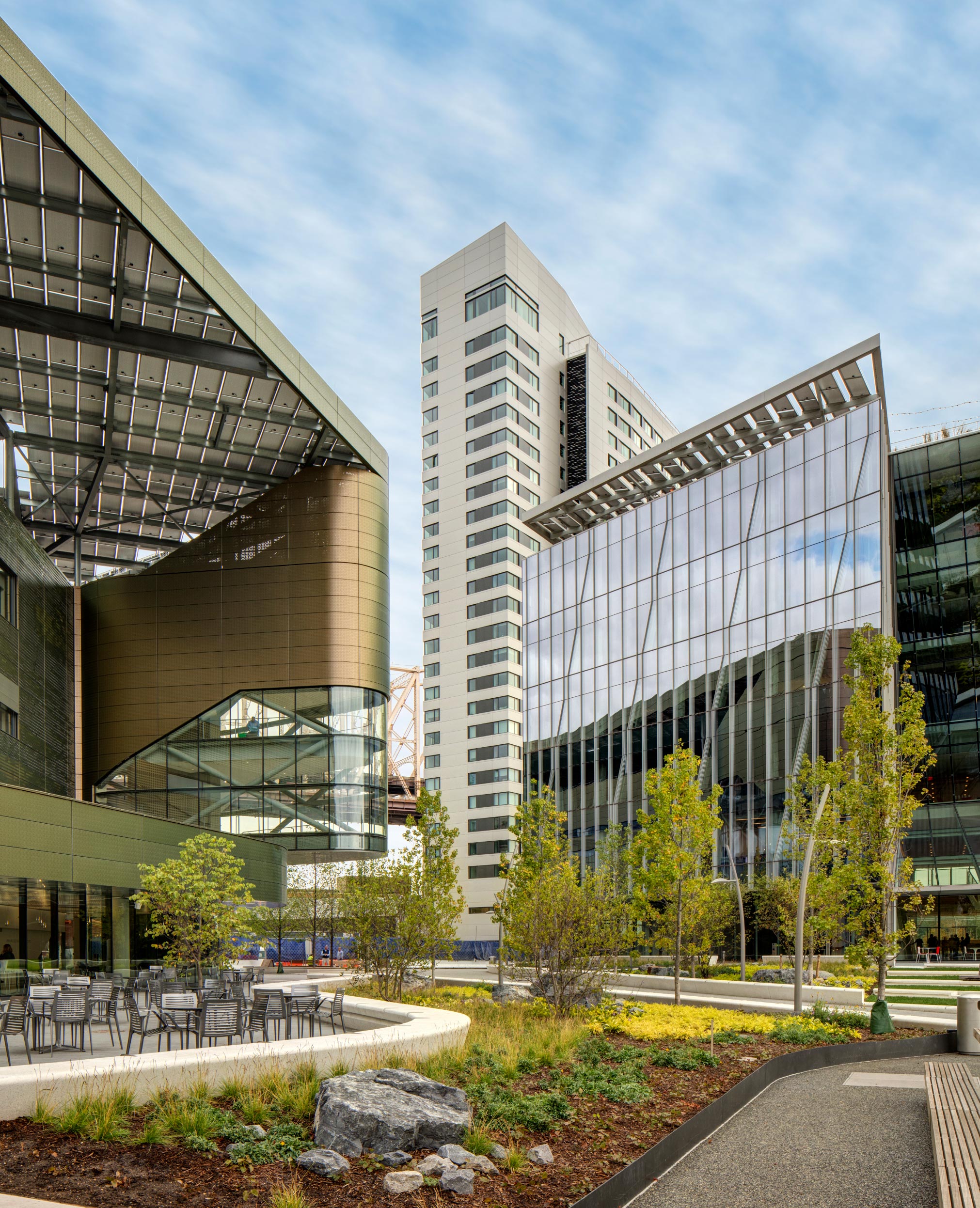
1
The House was the tallest and largest Passive House residential building in the world when it was unveiled. Passive House is the most rigorous energy efficiency standard that can be obtained—cutting heating consumption by 60-80% compared to code buildings.
2
The passive design’s projected savings of 882 tons of CO2 per year is the same as if 5,300 trees were planted.
3
Five campus buildings have achieved LEED (Leadership in Energy and Environmental Design) certification. Two—The House and the Bloomberg Center—attained the pinnacle of globally recognized sustainability rankings with a LEED Platinum rating.
4
That blue toilet water in the Bloomberg Center? That’s harvested rainwater. Rainwater collection centers help reduce consumption of NYC drinking water.
5
The Bloomberg Center doesn’t burn any fossil fuels for heating or cooling. Instead, it uses a ground-source heat pump installed under the campus lawn to maintain temperatures indoors year-round. Electricity is also offset by a rooftop PV array.
6
Strategic campus bioswales and porous paving collect and allow rain to soak into the earth. This avoids the accumulation of grime and garbage in water that would otherwise head straight into the river. These landscape features also add to the beauty of campus.
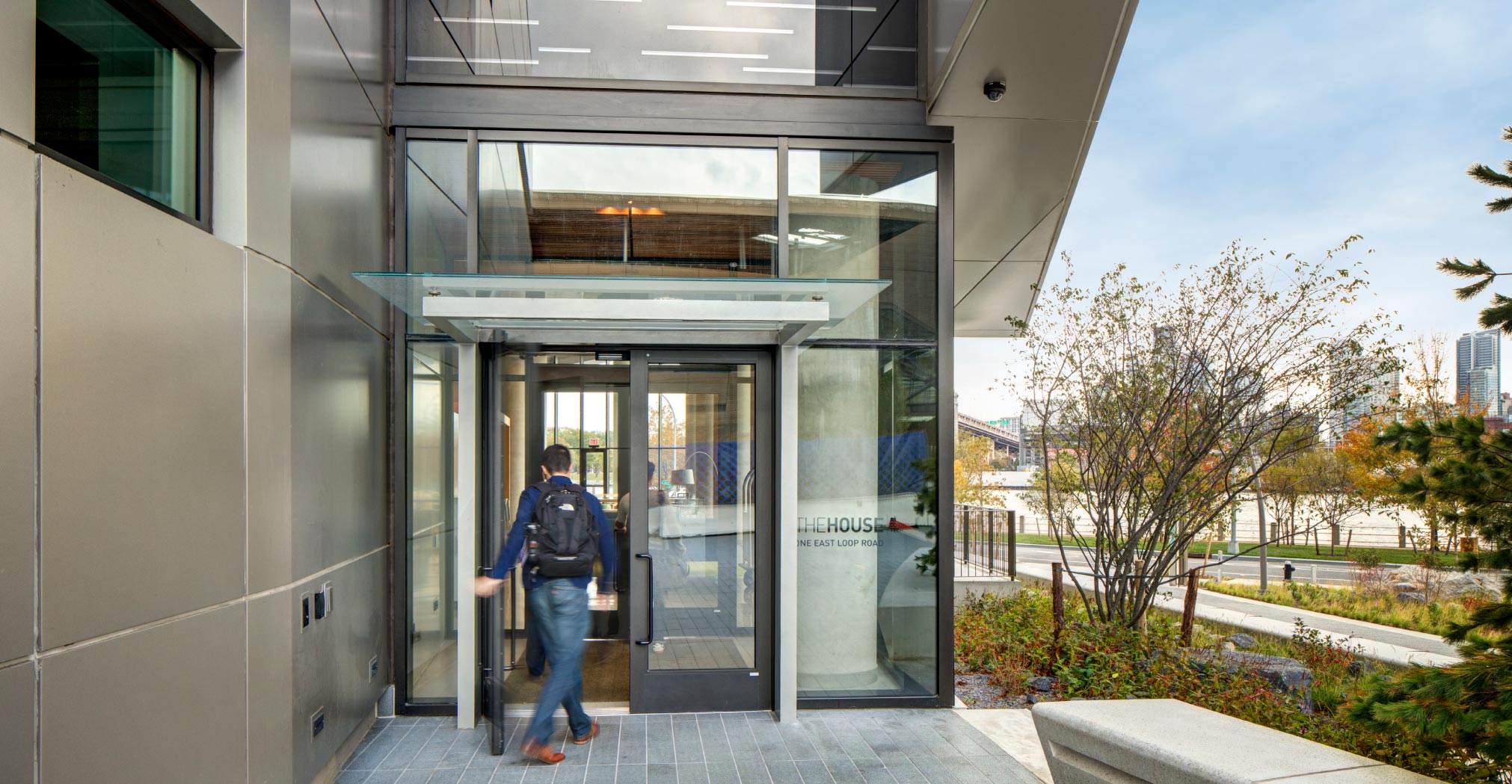
“It’s about testing new and bold architectural ideas that have larger ramifications.”
— Kent Kleinman | Dean, College of Architecture, Art, and Planning | Cornell University
